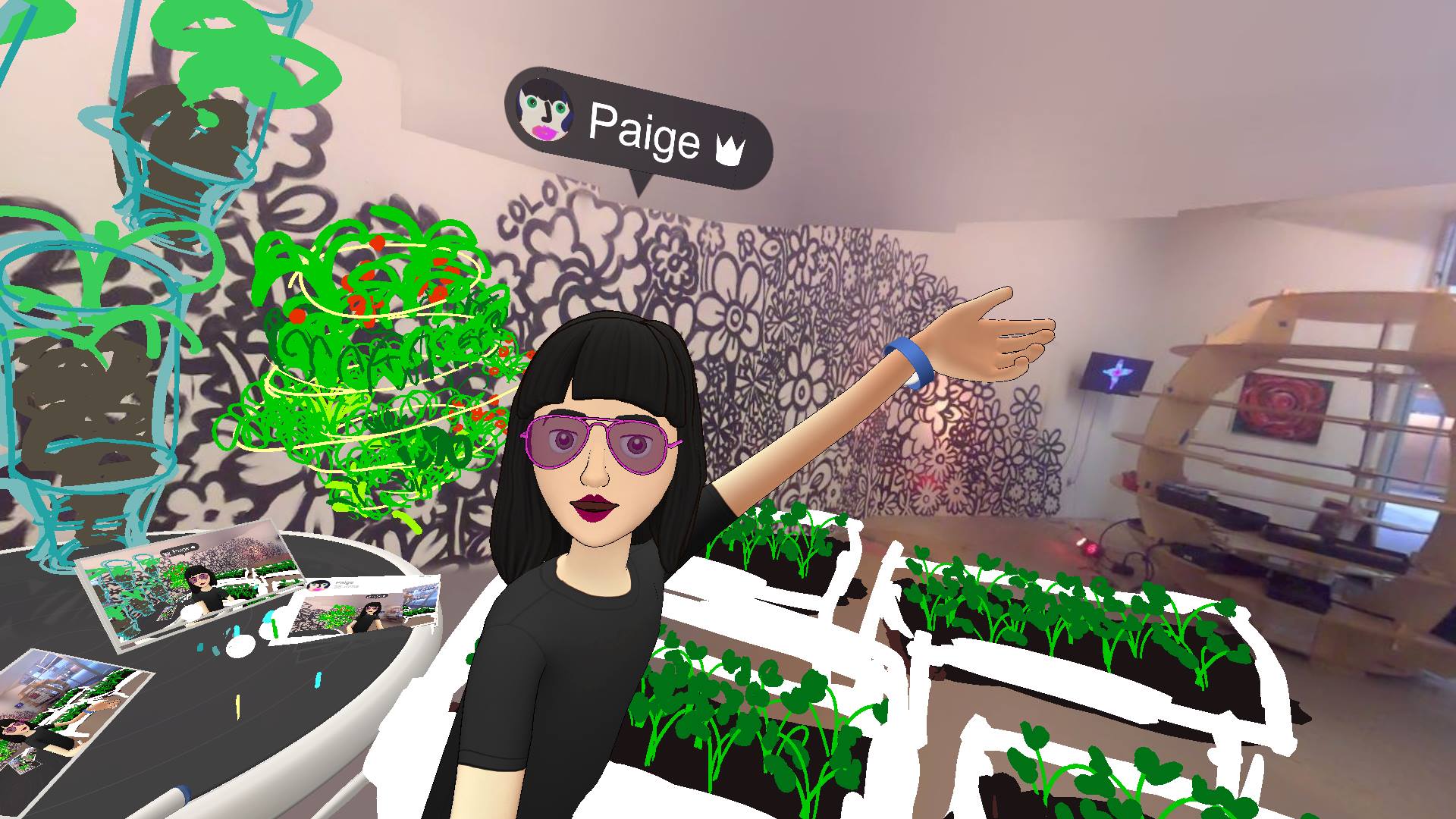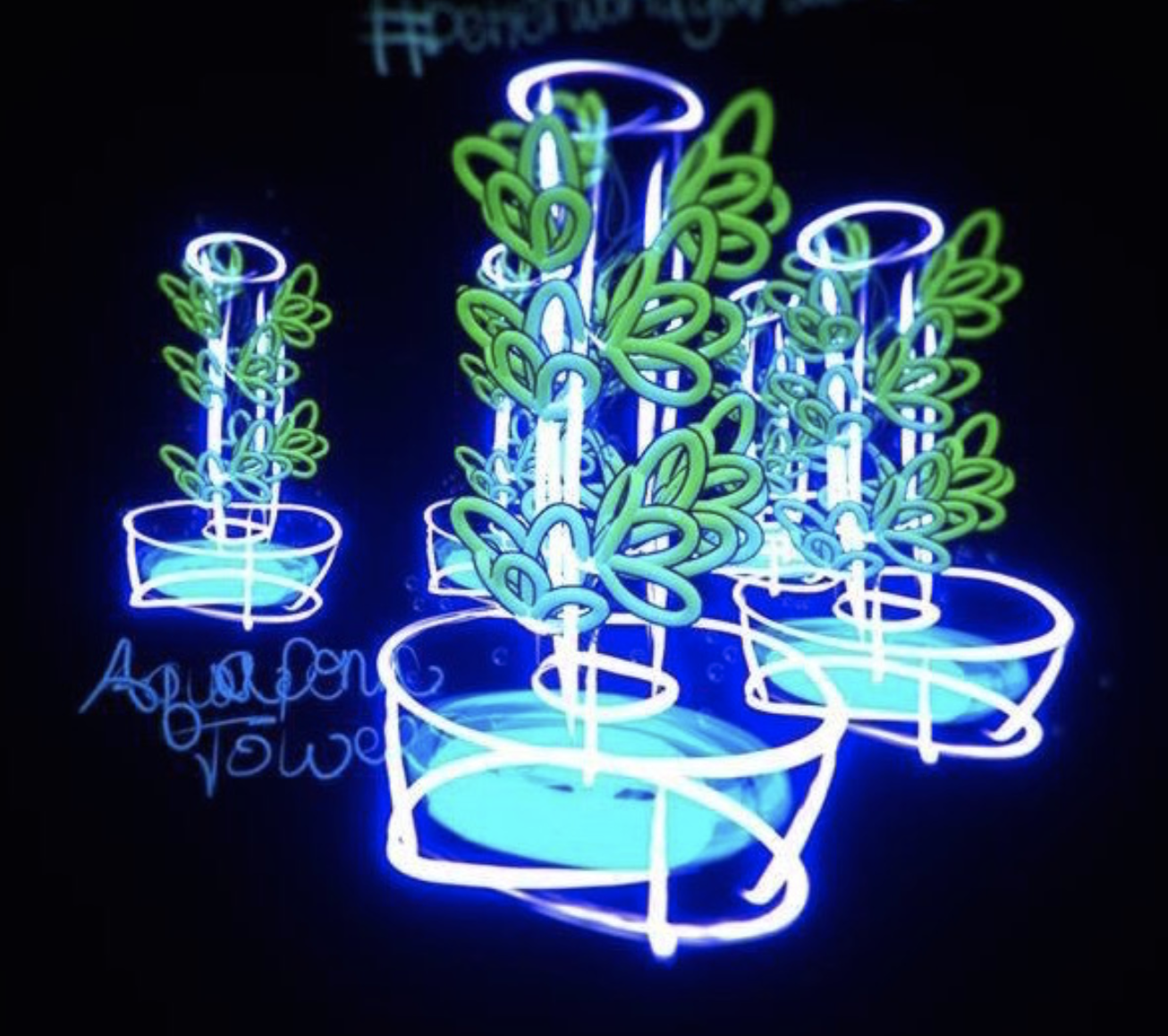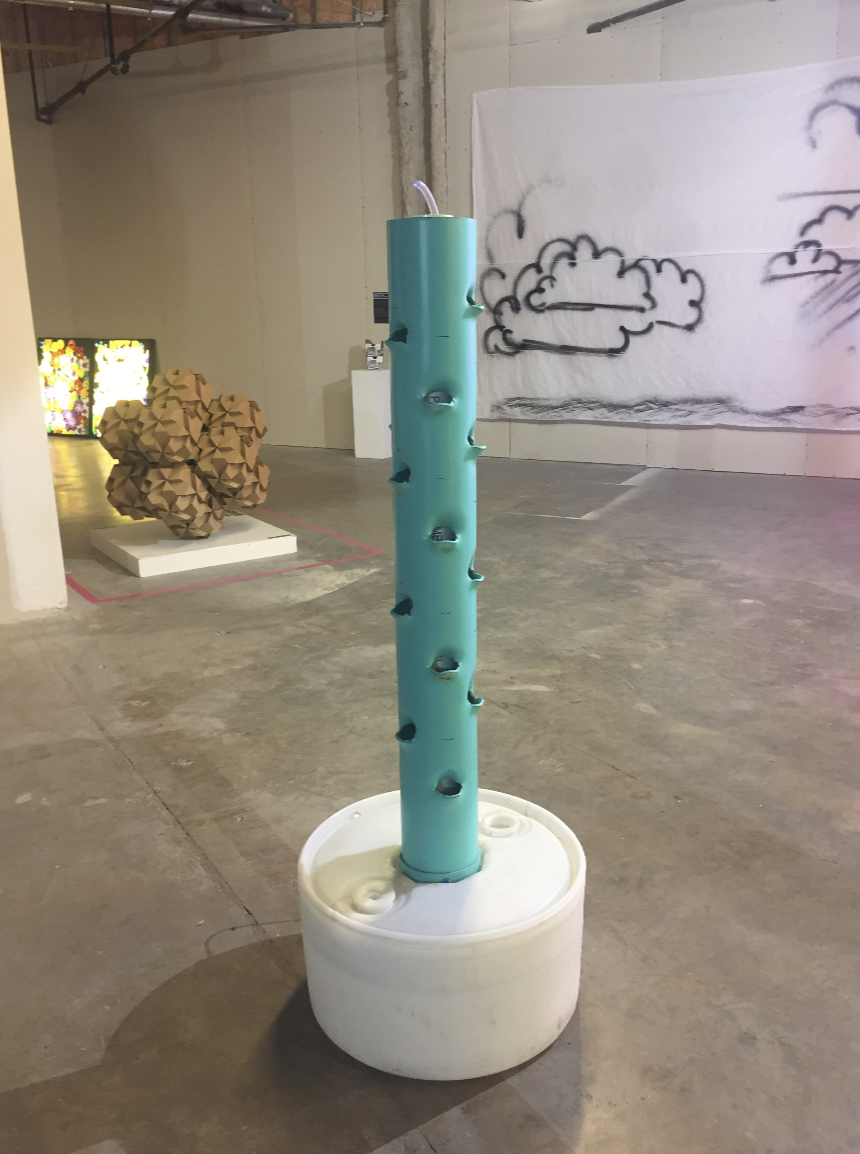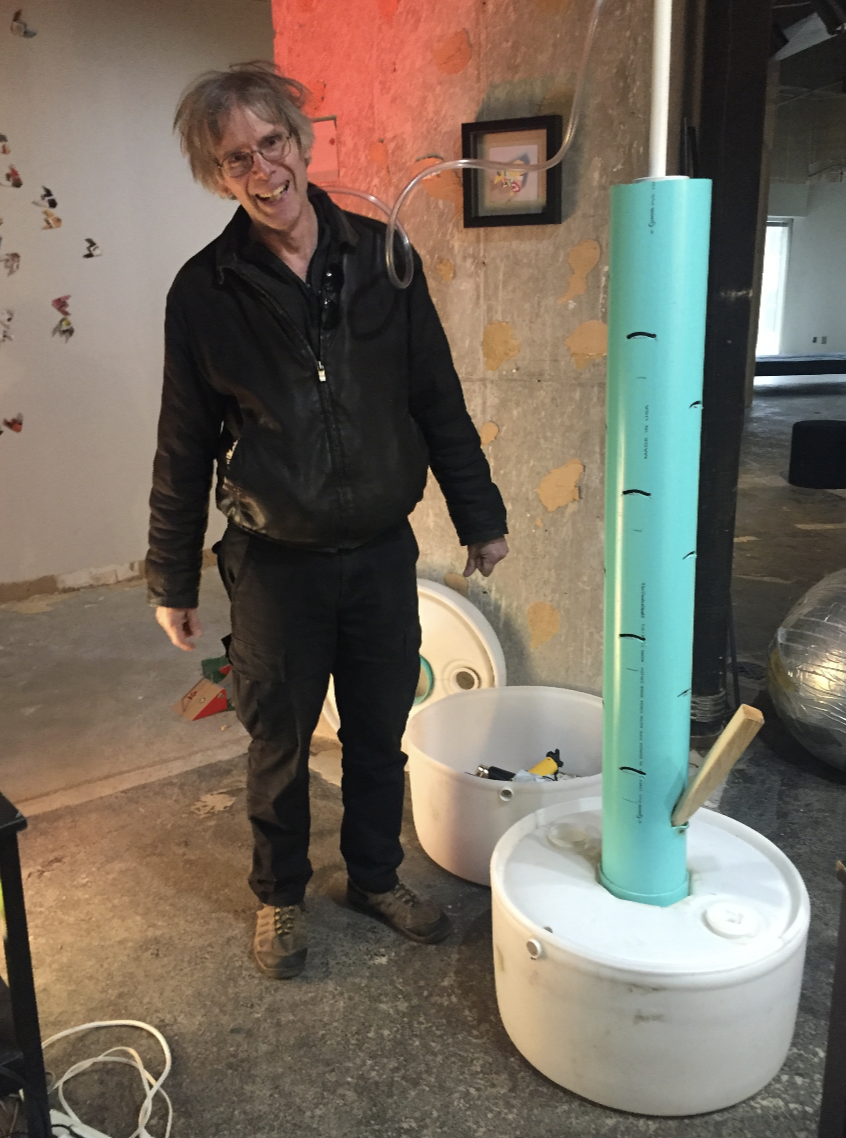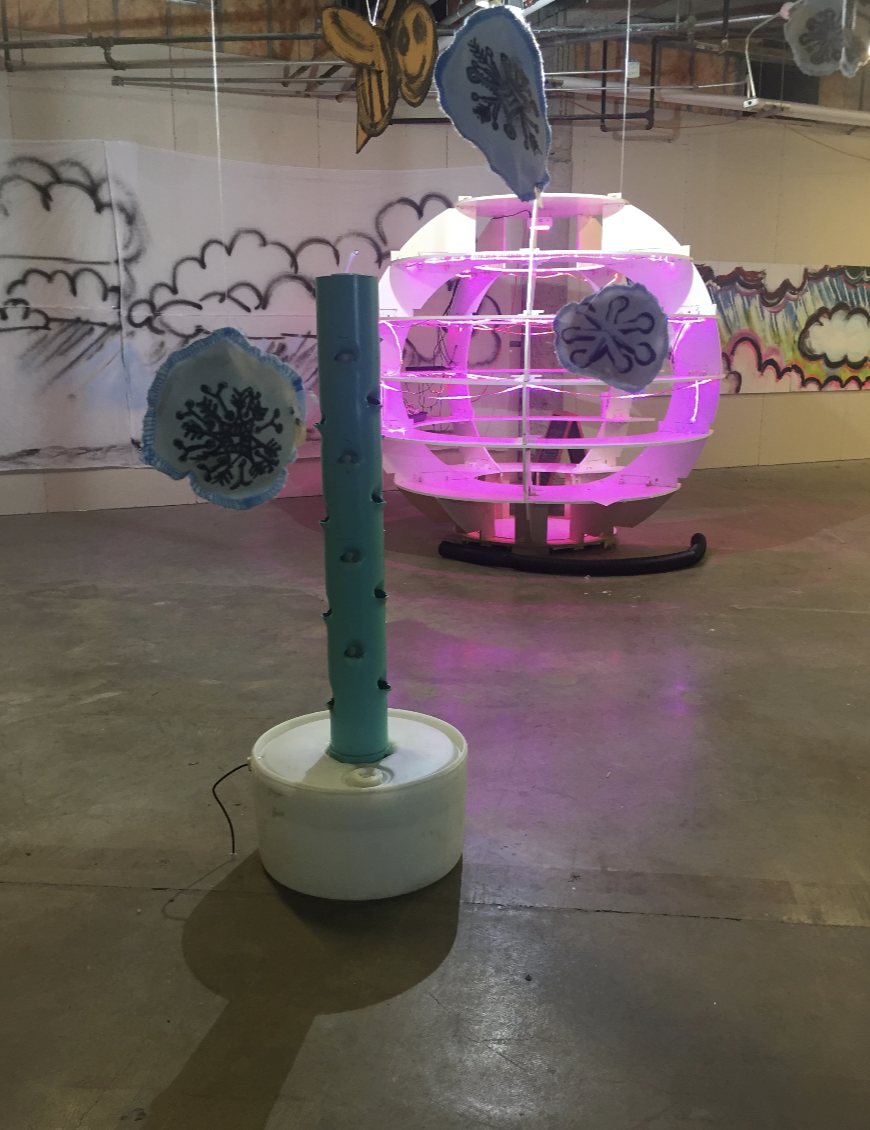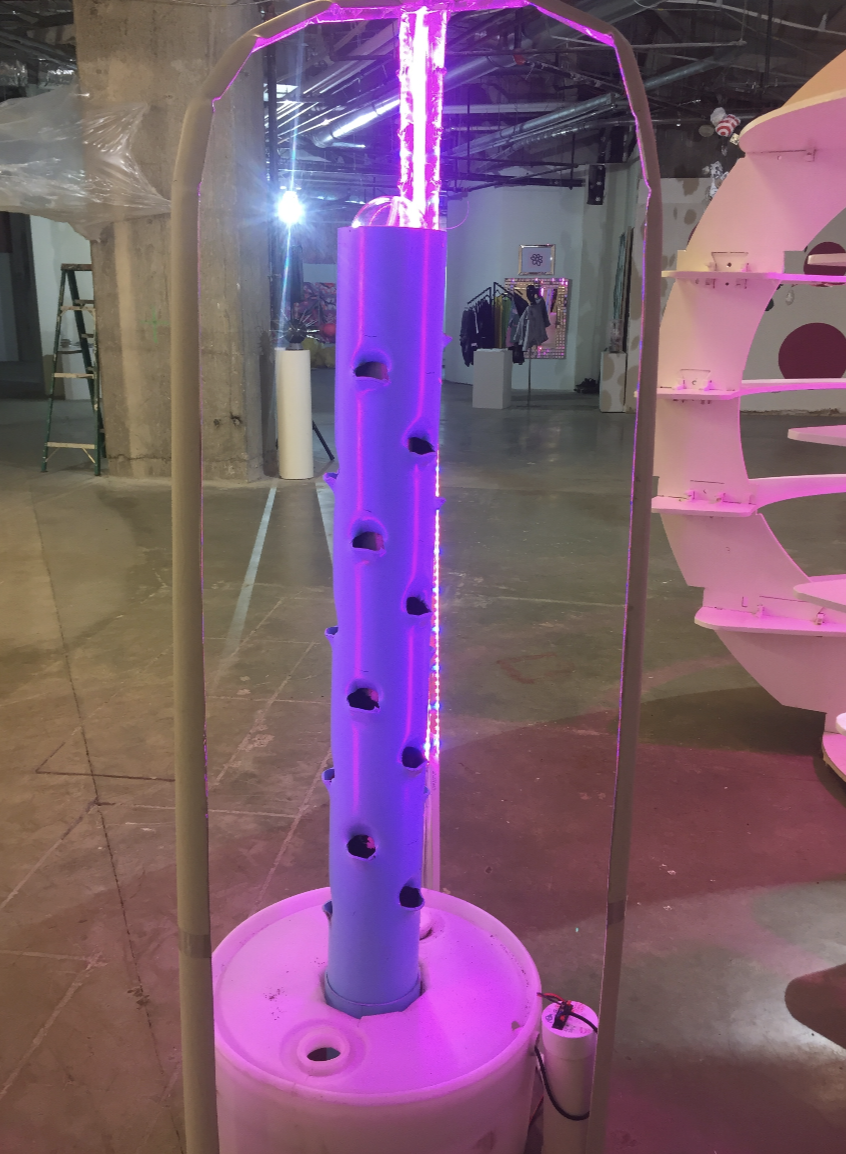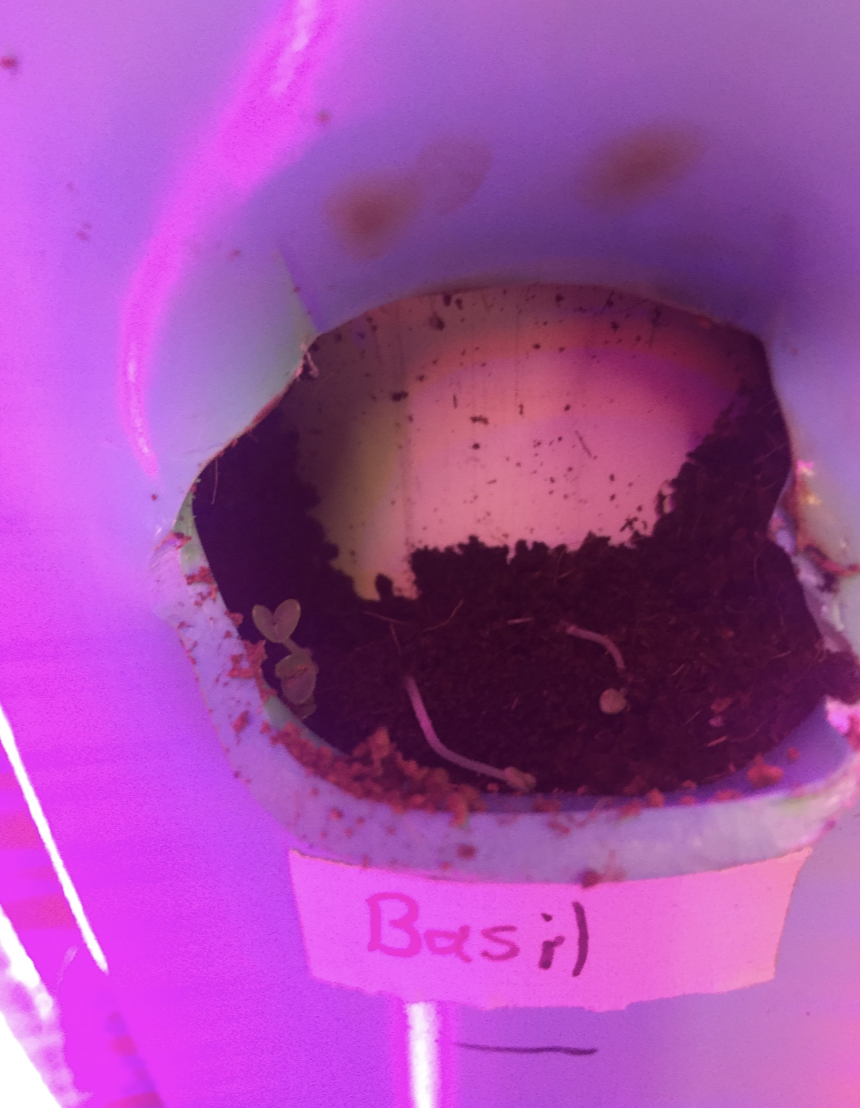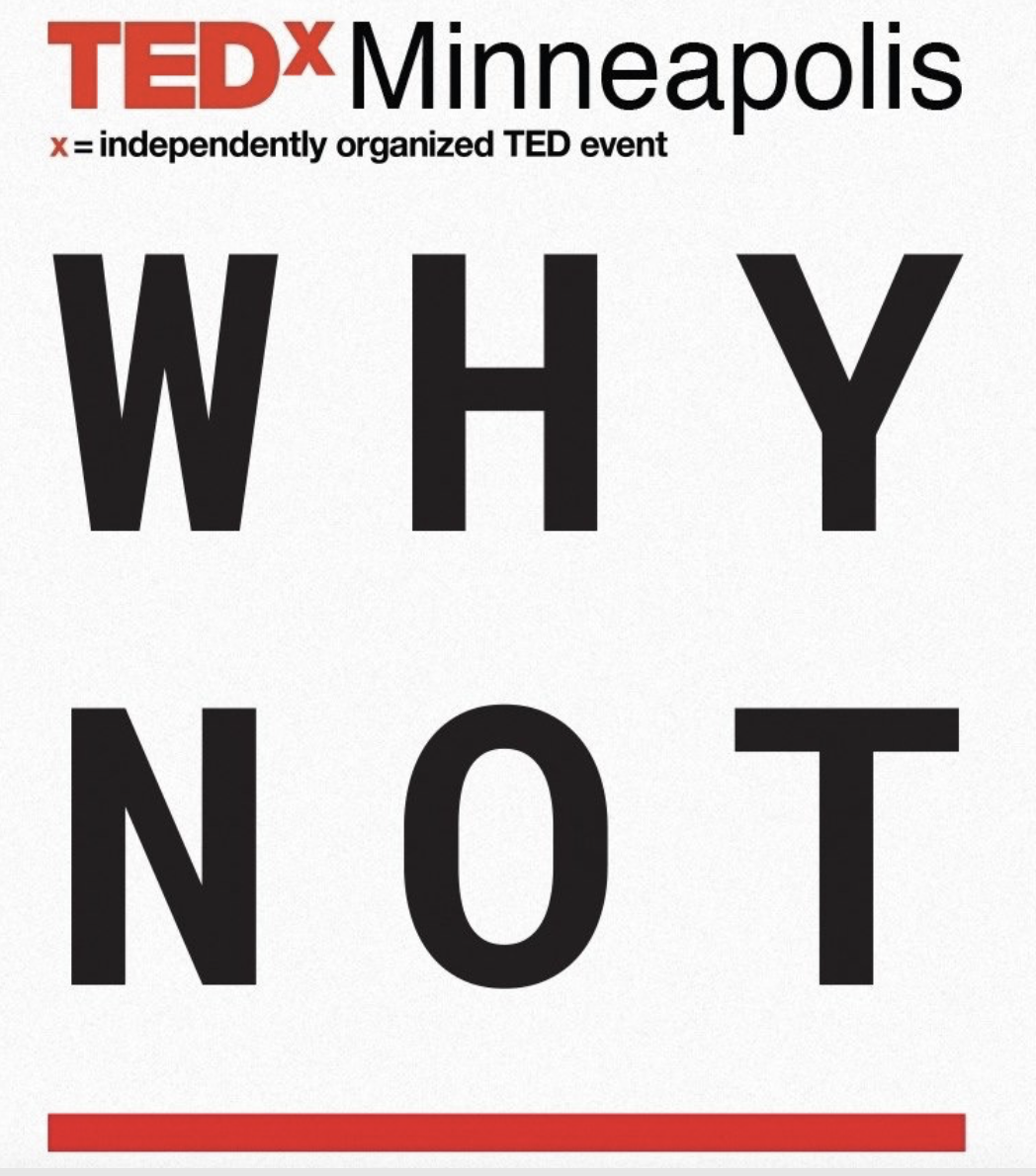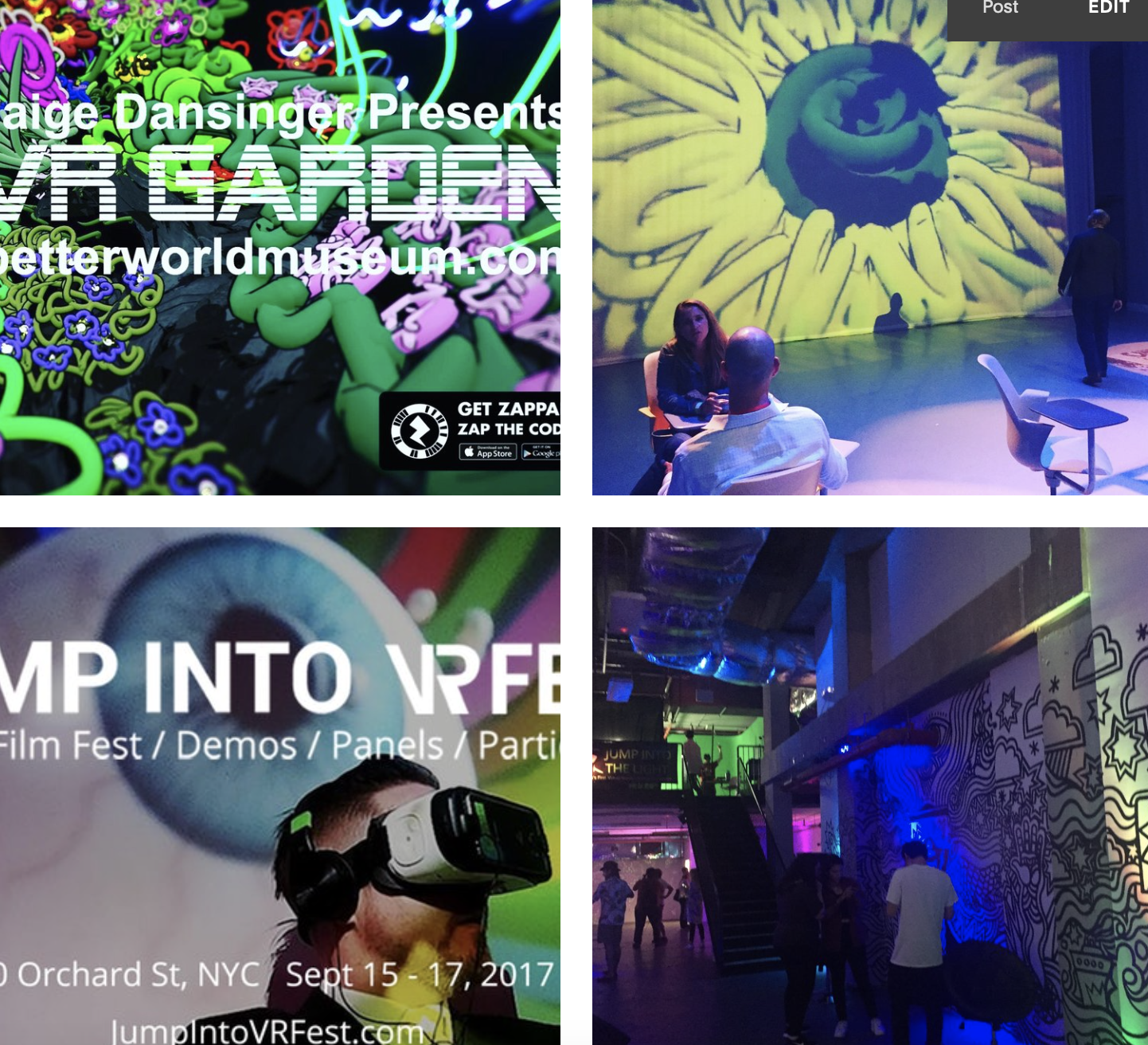Purpose: Garden One creates more resiliency by using creative tech and community-building to grow better together. We create sustainable urban edible Smart-City infrastructures and solutions.
Story: At Better World Museum’s flagship location in the center of downtown Minneapolis, MN, we created a free public indoor edible garden. Using creative technology to ignite the community to grow together, we provided on and offline activities that promoted Well-Being, Smart-City Eco-Initiatives, and created sustainable relationships empowering vulnerable community members. Now we plan to do it all over the world!
New Garden One Orb. Demonstrating garden systems with hand-drawn raised beds, recycled water bottle plantings, and a Garden Orb is included. 360 image import into Facebook Spaces (2026-2018). Minneapolis Center of Digital Art (pre-Better World Museum), City Center Minneapolis, 2017.
Garden One Orb drawing in VR using Tilt Brush, 2017.
Garden One Blog
A Garden Cycle
November, 9, 2019. Since closing Better World Museum’s Flagship downtown Minneapolis site to design and promote a global concept, the Garden One Test Lab is split between my condo and Better World Museum’s “Maker Maven” aka: Marlyn Anderson’s downtown office (a 20 minute walk away). His office is a series of rooms set-up as a Maker-Lab with 3D Printers printing things and sensors recording miscellanies. I like visiting because he likes to show me what he’s working on and new things he makes.
Now that I’m back home from drawing VR Garden in Shenzhen & Beijing in China, Singapore, Cambodia, Seattle, San Francisco, San Jose, New York, and Miami in 2019, I’ve started new indoor hydroponic gardens at home and starting to design and build some new Garden Towers at Marlyn’s office next Tuesday. We will use his office to build them, and I will take back to my place to test. Then we can start making them with community members, school groups, and make them an integral part of our Giving Strategy. Supplying vulnerable community members with edible Garden Towers is our ultimate goal!:
Garden One’s purpose is to create more resiliency by using creative tech and community-building to grow better together. We create sustainable urban edible Smart-City infrastructures and solutions.
At Better World Museum’s flagship location in the center of downtown Minneapolis, MN, we created a free public indoor edible garden. Using creative technology to ignite the community to grow together, we provided on and offline activities that promoted Well-Being, Smart-City Eco-Initiatives, and created sustainable relationships empowering vulnerable community members. Now we plan to do it all over the world by building them with communities and schools. Once our design works awesome, when one purchases a Garden Tower we plan to donate 1:1 back to the community.
Garden One is Growing
January 29, 2019. Garden Towers, New Lighting, and Planting Seedlings. The Garden One’s orb is not physically assessable for all audiences. We wanted to create a new diy model of a Garden Tower with recycled materials. We’re creating this model two at a time - one to keep at the museum and one to donate to a homeless or housing community. Please let us know if you’d like to participate in a Hackathon to make them or purchase one as a kit in the future.
Garden One in New Space
September 1, 2018 Garden One is re-installed in the new museum space. The design is being modified to be more accessible and is transitioning from a grow-room utilizing a soil-based medium into a hydroponic grow room area. Hack Nights have started again and will be more often during the colder months.
Garden One in VR
November, 25, 2017. Facebook Spaces Live and Tilt Brush are perfect ways to share, ideate, and try new things with Garden One.
Facebook Spaces Live. Learn how to get involved with Garden One, and explore unique garden models using recycled plastics, draw some strawberries, and see what else is growing in Garden One inside FB Spaces. Watch the video and enjoy the virtual reality "on-site" photoshoot. Facebook Live adds social connection to the experience.
Drawing in Tilt Brush. Tilt Brush allows me to get inside of Garden One. Check out this video of different plants imagined inside of the orb. Photos include ideas for bottle walls and placed into a smart-city urban park. Tilt Brush is my favorite drawing tool for immersive experiences.
IoT Fuse Hackathon
November 20, 2017. Thoughts After HackDay: Garden One for Social Action
We had our second HackDay with IoT Fuse. Our goal was to get the grow lights operating and the water hoses threaded into the structure. I was excited that around twenty or more people came. I felt that the people who came were diverse, but that a more inclusive community would take me actively, with sincere urgency, creating a relationship with the Black and GLBT+ tech communities. I'm committed to Garden One as a platform for inclusion, and willing to be more aggressive and take much bolder steps to becoming a more active co-conspiritor in the work that is already being done to create more social equality for more people.
I was happy to accomplish one of my goals this month, to propagate a relationship with Harbor Lights Homeless Shelter. I did this by connecting with Joan Vorderbruggen of Made Here, Hennepin Theatre Trust/We Do Community Art Director. She was newly appointed on their Advisory Board and promised to announce BWM's interest in creating a relationship. We have worked together in the past with the 5to10 Hennepin Placemaking with DAP, Domestic Abuse public art project, and twice with Made Here. Joan is one of the most committed people I ever met to creating more equity and it’s an honor to start a relationship with her organization that may pave the way for the garden to impact more vulnerable people.
I thought more about how a relationship may look like,, Ultimately, I'd like there to be regular greens supplying the shelter. But what would instant leadership roles or Hour-long jobs look like? I thought of creating instant opportunities, a "$20/ 1 Hour Leader" program, where a person in need works an hour providing their skills, or works on a creative garden project and is compensated $20 cash on the spot. No expectation of returning to work or even doing tasks they are untrained for, the idea is to create opportunities for raising money and honoring the leaders in each of us where we are today in life. We all grow best if watered where we are.
I hope to host a monthly Hackday and follow up with a post that summarizes monthly actions and accomplishments, as well as sets the next month's goals on ways Better Word Museum is using Garden One to create more equity and inclusion in the center of downtown. It will serve to help me form a more structured practice, or an accountability journal for MASS Action, Museums as a Site for Social Action. My goals are: 1. Reach out to create some more relationships in the Black and GLBT+ community. 2. Connect with more people and create unexpected and uplifting opportunities for people can participate.in Garden One. 3. Organize the next Hackney and invite new partners and friends!
IoT Fuse and Community Garden One Hackathon
How a Museum Garden Connects Community
October 1, 2017
Better World Museum is creating an edible indoor garden as a form of social action. Garden One is a project dedicated to creating more equity, inclusion, and diversity with placemaking. The garden uses emerging technology to enhance human-centered design and helps make growing plants a mobile-connected experience.
The design is a giant orb downloaded from IKEA’s Open Source Growroom, created by SPACE10 and architects Mads-Ulrik Husum and Sine Lindholm. Paul Seim, of IoTFuse created the *prototype model, currently installed at Better World Museum. IoTFuse hosted a Hackathon on September 12th. Many people came to share their knowledge and skills using emerging technology.
How does this promote more equity in our community? The answer is built into how we will use the structure and what we plan to do with creative technology in the design and approach to community outreach. The shelves will hold many trays. Each will be planted with containers holding soil-based grow medium with soil sensors connected to a water pump system and LED grow lights. The soil sensors will also be connected to an LED array of lights that is solely to communicate to the public when to water and when to pick the trays of plants, as well as to alert one on a mobile device. Nobody needs to ask permission to interact because the design informs the public how and when through colored lights for visual communication and audible prompts for multi-sensory accessibility functions.
The public will be free to plant, water, and harvest the herbs and veggies growing in Garden One, or sit inside and just be. Better World Museum will also reach out to the community to invite diverse groups to visit and plant a tray in the garden. The visiting groups will plant seeds and spend time watering and tending the garden. An additional art activity or picking salad greens and herbs to share a nutitious snack as a method of community connection, is a way of convening with deeper meaning. Each group will be able to monitor the trays on their smartphones, or laptops at work or home by following an app created for Garden One.
The public will be free to plant, water, and harvest the herbs & veggies growing in Garden One, or sit inside and just be.
Garden One not only addresses community connection to create a human-centered platform, but it’s also a model of smart urban infrastructure for the future addressing ecological and sustainability issues. An edible garden indoors during sub-frozen Minnesota temperatures seems critical in providing green space, living plant foods, and offering the possibility of survival nutrients in the case of disaster from extreme climate change or societal breakdown. Garden One is not just a Public Art Project, it is a smart-city future solution for a better world today.
Better World Museum is an ideal setting to prototype Garden One. The location is right in the middle of downtown Minneapolis in a dead mall, popular in the 80’s, in the City Center building. Today it’s a hub for the working class and corporate elite, traveling visitors, along with commuters and people along Hennepin Avenue, which includes the Harbor Lights homeless shelter, and Youth Link organizations just a couple blocks away. Unfortunately, vulnerable community members are often not welcome in many public spaces. Garden One strives to create a peaceful, warm, inviting, healing, learning place for all. People will be welcome to water plants or eat radishes and dill. Tethered iPads inside the garden on the interior benches will be available for people to draw plants, edit Wikipedia, or record video stories about being in the garden. We hope that we will grow so much basil and leafy veggies that we may consistently supply one of the organizations that support vulnerable communities with salad greens from Garden One.
Garden One strives to create a peaceful, warm, inviting, healing, learning place for all.
More ways Garden One is creating community is with fun creative projects making gardens in different mediums. These creative gardens include painted murals, digital video, and Augmented and Virtual Reality. Public participation is the core of these projects. People have many opportunities in different mediums to express their unique voices and be part of our community, and larger world, growing better together.
Community Garden Murals with Augmented Reality include drawings from teen visitors and Rebecca K’s Science Research Cards. Becca is our 12-year-old Director of Sciences at BWM. Check out her Instagram account @lifeorb_better_world — Our first mural was showcased in FUTURE, Made Here Exhibit, 2017 (photo: Steve Lang). Street art mural on 50th & Penn, Mpls.
So many great people participated this Summer! Each person shares a part of themselves.. their stories sometimes are in worlds, drawings, or paintings but each reveals parts of their identity — these garden murals connect people!
VR Garden created with TiltBrush. Added to Tiltbrush Sketches, the public can remix and add to this drawing. People from Japan, California, Arizona, and New York, and locally in Minneapolis have added to the drawing. Presented at TEDx Minneapolis (2017).
TEDx Minneapolis and Jump Into VR Fest, NYC were great opportunities to share VR Gardens with larger communities.
*Personal thoughts: This model is great, but one issue I’m sensitive to is this structure isn’t ADA-compliant. I feel like we need to make a new larger orb — Public Art needs to be fully accessible and inclusive for all! We plan to work out all our problems on this prototype and then create a better, smarter, fully inclusive ADA-accessible model that may be presented in another public space. Ideal public spaces are in a museum, library, school or university, hospital, airport, civic plaza, or town center.
MCN50 Pittsburg: A 12-Year-Old Director
I am honored to be accepted to present this Case Study at Museum Computer Network's 50th Annual Conference, in Pittsburgh, PA, November 7-10th, 2017. This presentation centers on a project called Garden One, an edible indoor garden system. This garden is a community partnership with Paul Seim (ATT), IoT Fuse, Lab 651, Women in Tech, and more. One special community partner is Rebecca K (Becca). She was a visitor at Better World Museum's first Family Day. She introduced herself as a "Specialist in Nitrates" and I asked her to tell me more, a concept used in Agile Museum Leadership.
We chatted for 10 mins and I gave her my card. She looked me up, talked it over with her mom, and emailed me. At the end of our first video chat, I offered her the position of Director of Science and Innovation, not an Intern or Volunteer. Why would I do this? What is she doing to fill this role? Was I afraid to take this risk? NO. No, not at all! Becca is great - she started an Instagram account, is creating Science Cards, growing and documenting a personal home garden, and will be a future ambassador in local schools to implement Garden One systems into STEAM and Life Science Classrooms and other public spaces. The Presentation of this Case Study will be developed from the following:
ACCEPTED CASE STUDY
What happens when a museum makes a teen a Leader? Better World Museum appointed a 12-year-old, "Director of Science and Innovation" for an indoor edible garden project. Her responsibilities include researching plants, managing social media, and a blog. However, she has exceeded these expectations by creating a program that uses connected technological devices and public place-making to help bring sustainable solutions to starving communities. This Case Study will examine how one 12-year-old can be an effective museum leader, despite a lack of advanced education, professionalism, or expected teen behaviors. Follow this presentation for a study in risk-taking, teen leadership, unexpected rewards, challenges, problem-solving, and stories that defy expectations of what it takes to be a museum leader today, as well as this teen director's impact on the greater community.
Teen leadership can be risky. What they will post online? Why does Generation Z use social media differently than GenX? Why is it essential for them to play with a cat during a FaceTime meeting? These questions evolved into how to prepare a teen to present museum projects to ATT Executives, and other tech companies, with positive results. This Case Study shows how one teen is helping urban teens confront racial and economic inequities with edible indoor gardens in schools. This is a place-making project using creative technology for future solutions, in vulnerable communities, for future environmental sustainability, directed by a 12-year-old museum leader. Participants who witness this Case Study will want to put a teen right into a leadership role.
The Project Context Related to the Proposal:
GARDEN ONE
This whole thing started when I submitted a proposal IoT Fuse for presenting Creative Tech for Building Empathy for Vulnerable Communities. Part of my Presentation was to discuss the project I was planning to build based on an IKEA open-source garden. I had previously started a FB page and assembled a team including Hattie Ball, Director of VR at BWM, Women in Tech, and had Becca part of the group. I included the Life Orb (our name for it then) project in my presentation. However, a week before IoT Fuse, I saw a tweet saying there would be a Garden One model onsite, created by Paul Seim. I was pretty excited to connect!
Paul, Hattie and I met at BWM. We talked about everything from repeating Garden One in schools (go Becca!), building it into the infrastructure in refugee shelters, to creating shared VR museum garden experiences. Meanwhile, at BWM we are on our third Community Garden Mural Project, including mixed reality with Augmented and Virtual Reality!! BWM is also preparing to house the Garden One model from IoT Fuse, through the summer. On August 19th we are holding the first Garden One Hackathon!
Check out Hattie's 3D Model on Sketchfab

